Related Research Articles
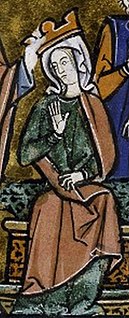
Melisende was Queen of Jerusalem from 1131 to 1153, and regent for her son between 1153 and 1161, while he was on campaign. She was the eldest daughter of King Baldwin II of Jerusalem, and the Armenian princess Morphia of Melitene.
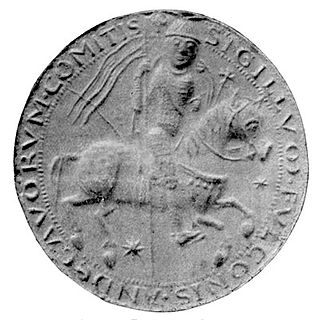
Fulk, also known as Fulk the Younger, was the count of Anjou from 1109 to 1129 and the king of Jerusalem with his wife from 1131 to his death. During their reign, the Kingdom of Jerusalem reached its largest territorial extent.
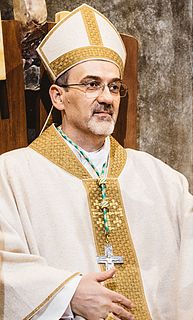
The Latin Patriarchate of Jerusalem is the Latin Catholic ecclesiastical patriarchate in Jerusalem, officially seated in the Church of the Holy Sepulchre. It was originally established in 1099, with the Kingdom of Jerusalem encompassing the territories in the Holy Land newly conquered by the First Crusade. From 1374 to 1847 it was a titular see, with the patriarchs of Jerusalem being based at the Basilica di San Lorenzo fuori le Mura in Rome. A resident Latin patriarch was re-established in 1847 by Pius IX.
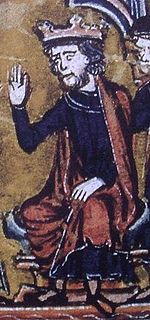
Baldwin II, also known as Baldwin of Bourcq or Bourg, was Count of Edessa from 1100 to 1118, and King of Jerusalem from 1118 until his death. He accompanied his cousins Godfrey of Bouillon and Baldwin of Boulogne to the Holy Land during the First Crusade. He succeeded Baldwin of Boulogne as the second count of Edessa when he left the county for Jerusalem following his brother's death. He was captured at the Battle of Harran in 1104. He was held first by Sökmen of Mardin, then by Jikirmish of Mosul, and finally by Jawali Saqawa. During his captivity, Tancred, the Crusader ruler of the Principality of Antioch, and Tancred's cousin, Richard of Salerno, governed Edessa as Baldwin's regents.

Sibylla was Queen of Jerusalem from 1186 to 1190. She reigned alongside her husband Guy of Lusignan, to whom she was unwaveringly attached despite his unpopularity among the barons of the Kingdom of Jerusalem.

Pons was count of Tripoli from 1112 to 1137. He was a minor when his father, Bertrand, died in 1112. He swore fealty to the Byzantine Emperor Alexios I Komnenos in the presence of a Byzantine embassy. His advisors sent him to Antioch to be educated in the court of Tancred of Antioch, ending the hostilities between the two crusader states. Tancred granted four important fortresses to Pons in the Principality of Antioch. Since Pons held his inherited lands in fief of the kings of Jerusalem, Tancred's grant strengthened the autonomy of the County of Tripoli. On his deathbed, Tancred also arranged the marriage of his wife, Cecile of France, to Pons.
Constance of Hauteville (1128–1163) was the ruling Princess of Antioch from 1130 to 1163. She was the only child of Bohemond II of Antioch by his wife, Alice of Jerusalem. Constance succeeded her father at the age of two, after he fell in battle, although his cousin Roger II of Sicily laid claim to Antioch. Her mother assumed the regency, but the Antiochene noblemen replaced her with her father, Baldwin II of Jerusalem. After he died in 1131, Alice again tried to take control of the government, but the Antiochene barons acknowledged the right of her brother-in-law Fulk of Anjou to rule as regent for Constance.
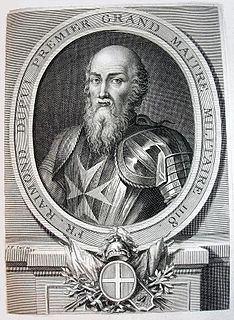
Raymond du Puy (1083–1160) was a knight from Dauphiné in France and the second Grand Master of the Knights Hospitaller, also known as the Order of St. John of Jerusalem, from around 1121 until 1160. Officially, he succeeded Blessed Gerard, the founder of the Order, as Grand Master. While traditionally cited as the direct successor upon Gerard's death in 1118 or 1120, his assumption of the magisterium was in 1121 or 1123 after one or two interim superiors, Pierre de Barcelona and Boyant Roger. Raymond divided the membership of the Order into clerical, military, and serving brothers and established the first significant Hospitaller infirmary near the Church of the Holy Sepulchre in Jerusalem.

The King of Jerusalem was the supreme ruler of the Kingdom of Jerusalem, a Crusader state founded in Jerusalem by the Latin Catholic leaders of the First Crusade, when the city was conquered in 1099.

Arda was the queen of Jerusalem as the 2nd spouse of King Baldwin I of Jerusalem. She was the first Queen consort of the Kingdom of Jerusalem, as Baldwin's brother and predecessor Godfrey of Bouillon was unmarried.
Roman of Le Puy, also known as Romanus of Puy, was the first lord of Oultrejordain in the Kingdom of Jerusalem from around 1120 to around 1126. He was a nobleman from Auvergne who accompanied Adhemar de Monteil, Bishop of Le Puy, to the Holy Land during the First Crusade. He signed royal charters during the reign of Baldwin I of Jerusalem. Baldwin I or his successor, Baldwin II of Jerusalem, granted Roman the important fief of Oultrejordain, or its northern region. He was deprived of most of his domains because of a rebellion against Baldwin II. He and his son lost their remaining estates after they were accused of conspiring against Baldwin II's successor, Fulk of Anjou, in the early 1130s.
William of Bures was Prince of Galilee from 1119 or 1120 to his death. He was descended from a French noble family which held estates near Paris. William and his brother, Godfrey, were listed among the chief vassals of Joscelin of Courtenay, Prince of Galilee, when their presence in the Holy Land was first recorded in 1115. After Joscelin received the County of Edessa from Baldwin II of Jerusalem in 1119, the king granted the Principality of Galilee to William. He succeeded Eustace Grenier as constable and bailiff in 1123. In his latter capacity, he administered the kingdom during the Baldwin II's captivity for more than a year, but his authority was limited.
Fulkof Angoulême was the Latin Patriarch of Jerusalem from 1146 to his death in 1157.
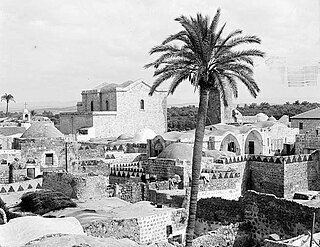
Diocese of Lydda (Lod) is one of the oldest bishoprics of the early Christian Church in the Holy Land. Suppressed under Persian and Arab-Islamic rule, it was revived by the Crusaders and remains a Latin Catholic titular see.

The timeline of the Kingdom of Jerusalem presents important events in the history of the Kingdom of Jerusalem—a Crusader state in modern day Israel and Jordan—in chronological order. The kingdom was established after the First Crusade in 1099. Its first ruler Godfrey of Bouillon did not take the title of king and swore fealty to the Latin Patriarch of Jerusalem, Daimbert. Godfrey's brother and successor Baldwin I was crowned the first king of Jerusalem without doing homage to the patriarch in 1100. By 1153, Baldwin I and his successors captured all towns on the Palestinian coast with the support of Pisan, Genoese and Venetian fleets and also took control of the caravan routes between Egypt and Syria. The kings regularly administered other crusader states—the Counties of Edessa and Tripoli and the Principality of Antioch—on behalf of their absent or underage rulers.
The Roman Catholic Diocese of Sidon was a bishopric in the Kingdom of Jerusalem in the 12th and 13th centuries.

The timeline of the Principality of Antioch is a chronological list of events of the history of the Principality of Antioch.
Robert of Rouen was the first bishop of Lydda and Ramla from 1099.
The Roman Catholic Archdiocese of Tyre was an archbishopric in the Kingdom of Jerusalem.
William I was the second Latin archbishop of Tyre from 1128 until 1134 or 1135. He was originally from England and served as prior of the Church of the Holy Sepulchre before his appointment as archbishop.
References
- ↑ Murray 2000, p. 227.
- 1 2 3 4 Hamilton 2016, p. 58.
- ↑ Murray 2000, p. 169.
- ↑ Hamilton 2016, p. 62 n. 3.
- ↑ Hamilton 2016, pp. 142, 148.
- ↑ Murray 2000, p. 110.
- ↑ Hamilton 2016, p. 132.
- ↑ Mayer 1985, pp. 142–143.